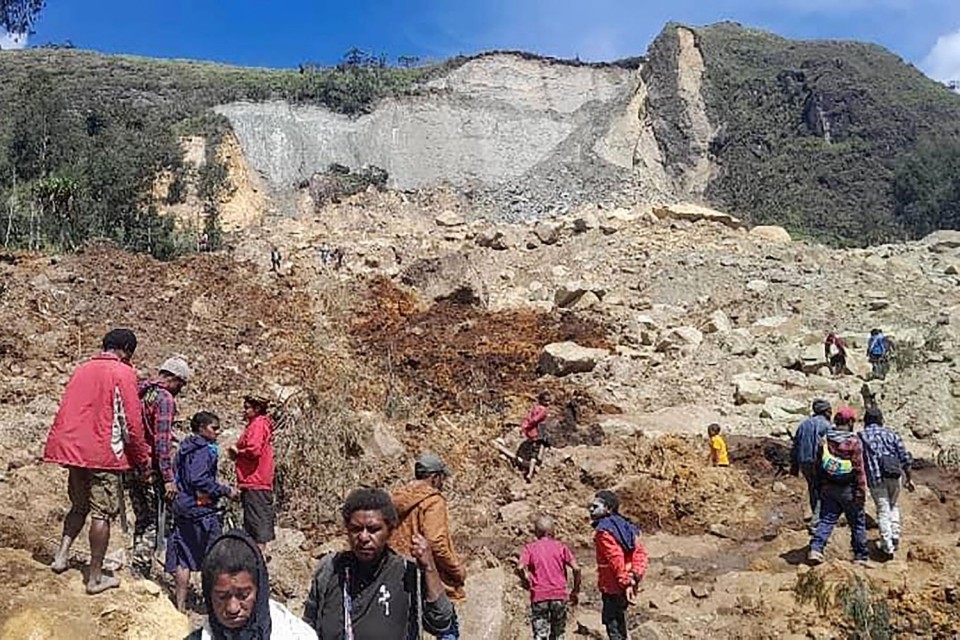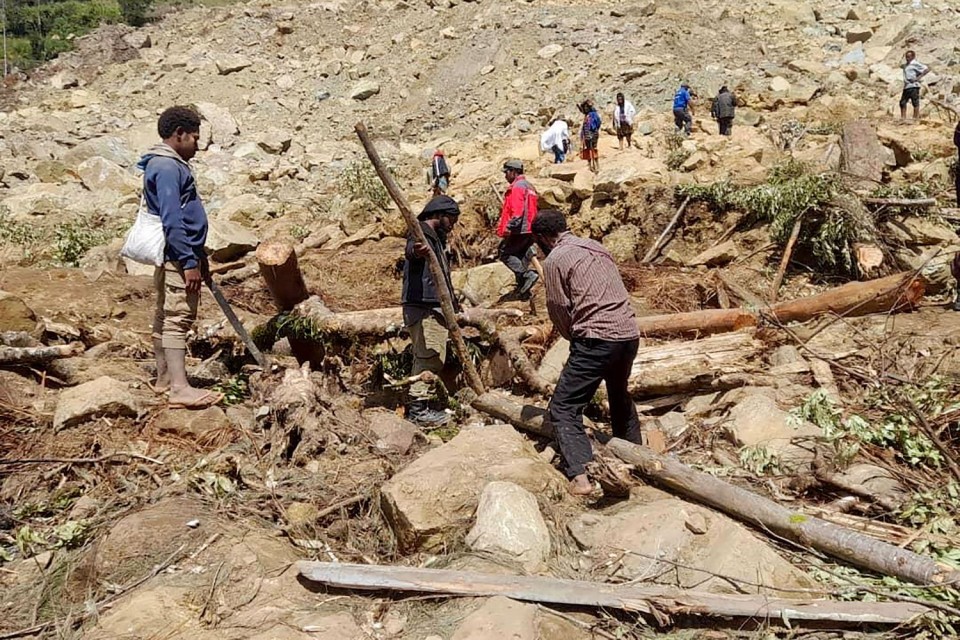PORT MORESBY, May 29, 2024 (AFP) – Supplies of food and medicine were beginning to arrive at the scene of a deadly landslide in Papua New Guinea Wednesday, with aid workers discovering children rendered mute by the shock of the disaster.
Papua New Guinea’s government estimates that 2,000 people may be buried underneath a massive landslide that struck a thriving highland settlement in Enga province in the early hours of May 24.
After days of frantic digging with makeshift tools, only six bodies have been pulled so far from the mountain of churned-up earth.
But with rescue teams abandoning hope of finding survivors under the metres of mud and rubble, the community has started to count the emotional and physical cost.
Mourning locals have started carrying the dead away in immense “haus krai” funeral processions, collective outpourings of love and grief that can last for weeks.
Images showed a group of men carrying a wooden casket down the forested valley on their shoulders, as scores of mourners trailed behind them, wailing with despair.
Many children are also thought to have been caught up in the tragedy.
“What we are hearing is that, because of what they saw and experienced, many of the children have stopped talking,” Justine McMahon from CARE Papua New Guinea told AFP.
Niels Kraaier from UNICEF Papua New Guinea said the landslide had orphaned nine children.
UNICEF said it had started distributing hygiene kits of buckets, jerrycans and soap, while World Vision said food, shelter, blankets and mosquito nets remained immediate needs.
Full-scale rescue and relief efforts have been severely hampered by the site’s remote location, nearby tribal violence and landslide damage that has severed major road links.
– Simmering frustration –
For days, the Papua New Guinea military has struggled to access the site with heavy earth-moving equipment.
The collapse of a wooden bridge along a major route has forced lengthy detours for some aid convoys.
Difficulties trucking supplies into the site — and the speed of the government response — has stoked simmering frustration among those on the ground.
Provincial leaders have implored the government to declare a national emergency, drawing attention to their plight and freeing up resources.
“I am not equipped to deal with this tragedy,” provincial administrator Sandis Tsaka told AFP.
Prime Minister James Marape is yet to visit the remote pocket of Enga province more than five days after the landslide.
He has stayed in the capital Port Moresby, where his government is trying to fend off a no confidence motion that could see them swept from power.
There are concerns this political manoeuvering has drawn attention away from what could be one of the country’s worst-ever natural disasters.
“On the night of the 24th of May our people in the village went to sleep for the last time not knowing that they would breathe their last breath as they were sleeping peacefully,” Marape told parliament on Wednesday.
“Nature, through a disastrous landslip, submerged or covered the village and from our initial estimation over 2,000 people would have perished in this disaster.”
Lawmakers held a minute’s silence for the victims.


– ‘Digging with hands’ –
Authorities have been coordinating the mass evacuation of impacted communities across two districts.
More than 1,000 people have already been displaced by the catastrophe, aid agencies have estimated.
Many residents have refused to leave at-risk areas because they were holding out hope of finding friends and family.
Satellite images show the enormous scale of the disaster.
A 600-metre-long (1,970-feet) smear of yellow and grey debris can be seen cutting through once verdant bushland.
“This was an area heavily populated with homes, businesses, churches and schools, it has been completely wiped out. It is the surface of the moon — it is just rocks,” said Tsaka.
“People are digging with their hands and fingers,” he said, expressing anguish at the government’s powerlessness in the face of the challenge.
